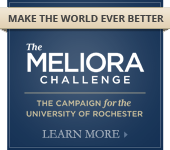Environmental Health & Safety
In Compliance with 29 CFR 1910.1030 OSHA Standard for Occupational Exposure to Bloodborne Pathogens
Bloodborne Pathogens Exposure Control Plan
Printable files are available in two parts with Adobe Acrobat Reader:
- PROCEDURES
- Spills
- Contain the spill by placing an absorbent cloth (i.e., paper towels, sheet) over the area involved. Keep all unnecessary people out of the area. If the spill is in a patient room or laboratory, close the door. If the spill is in a public access area such as a hallway, call Public Safety at x13 for assistance in limiting access to the area.
- Any employee sustaining skin, mucous membrane, or percutaneous contact with potentially infectious materials shall cleanse the affected areas as soon as possible, as follows:
- Intact skin - wash with soap and water.
- Non-intact skin and needlesticks/scalpel cuts - wash with soap and water.
- Intra-oral exposure - spit and rinse the mouth with water.
- Eyes - rinse well with sterile saline or water (if available), or tap water. (Note: Remove contact lenses first. After rinsing eyes, disinfect contacts per manufacturer's recommendation.)
- An SMH employee who has had an exposure is required to:
- Report exposure, as soon as possible, to the SMH Blood Exposure Hotline 24/7 at 275-1164.
- Contact supervisor
- Fill out an Employee Incident (Injury/Illness) report form using Cority program (www.safety.rochester.edu/SMH115.html)
- An UHS employee or Medical Student who has had an exposure is required to:
- Report exposure, as soon as possible, to the UHS Blood Exposure Hotline 24/7 at 275-2662.
- Contact supervisor
- Fill out an Employee Incident (Injury/Illness) report form using Cority program (www.safety.rochester.edu/SMH115.html)
- A properly trained employee* (see definition above) shall proceed with the clean-up and decontamination of the area involved.
- Wear appropriate personal protective equipment to prevent blood or other potentially infectious materials from reaching the employee's work clothes, street clothes, undergarments, skin, eyes, mouth, or other mucous membranes. Examples of appropriate personal protective equipment include, but are not limited to, gloves, lab coat, goggles, and mask.
- Cover the spilled material with bleach solution or other appropriate disinfectant approved by the appropriate Infection Control Committee (SMH or Eastman Institute for Oral Health). Work from the outside inward. Avoid splashing or splattering of blood.
- Pick up any broken glass or sharps by mechanical means, such as tongs or a broom and dustpan. This debris can then be deposited into a sharps disposal container. Never pick up sharps directly by hand.
- Wipe up blood and bleach solution with absorbent cloth or paper towels.
- Discard disposable cloths/towels and protective equipment into a red bag.
- Wash hands with soap and water.
- If the spill was cleaned by someone other than an Environmental Services employee and the area needs further cleaning, then call Environmental Services to have the area cleaned with regular detergent-disinfectant. The Eastman Institute for Oral Health employees are to call the Maintenance Department at ext. 5-5070 to have their area cleaned with regular detergent disinfectant.
- Waste Disposal
- Definition of Regulated Medical Waste (RMW)
- Infectious Waste
- Unbroken Blood Tubes
- Sharps
- Guidelines
The most immediate concern following a spill of potentially infectious material is to contain the area and treat any exposed persons. Then a properly trained employee* can begin the clean-up and decontamination process.
* A properly trained employee is an employee who has taken Bloodborne Pathogens Training (in MyPath) or has received "live training" from Environmental Health & Safety.
The following steps are to be taken immediately after a spill:
Any liquid or semi-liquid blood, body fluids or other potentially infectious materials; contaminated items that would release blood, body fluids or other potentially infectious materials in a liquid or semi-liquid state if compressed; items that are capable of releasing blood, body fluids or other potentially infectious materials during handling; used or unused sharps; and pathological and microbiological wastes containing blood, body fluids or other potentially infectious materials. Also included are cultures and stocks of infectious agents, contaminated animal carcasses, body parts and bedding of animals known to have been exposed to infectious agents.
Feces or materials saturated with feces are not RMW. Urine or materials saturated with urine is not RMW unless the urine is submitted as a clinical specimen for laboratory tests or if the patient is known to have a disease which may be transmitted through urine.
All infectious waste destined for disposal shall be placed in closable leak-proof containers or bags which are red in color. The containers should be labeled with the universal biohazard warning sign or the word "Biohazard". The labels should be fluorescent orange or orange-red with lettering and symbols in contrasting colors. If outside contamination of the container or bag is likely to occur, then a second closable leak-proof container or bag shall be placed over the outside of the first and closed to prevent leakage during handling, storage, and transport. (This applies only to internal transportation of regulated medical waste. External shipments are subject to additional requirements. Contact the Environmental Compliance manager at x5-4699 for more information.)
All unbroken blood tubes shall be disposed of in a hospital approved sharps shelter or in a plastic-lined cardboard box specifically approved for this purpose.
Immediately after use, sharps shall be disposed of in closable, puncture resistant, disposable containers. These containers shall be easily accessible to personnel and located in the immediate area of use. Sharps containers will be replaced when ¾ full.
Eastman Institute for Oral Health employees are to contact the Maintenance Department at ext. 5-5070 for sharps container replacement.
Guidelines for the disposal of regulated medical waste can be found in APPENDIX2. Additional information can obtained from the Environmental Compliance Manager at ext. 5-4699.
Continue to Section V, Part I - Hepatitis B Vaccination
QUESTIONS? Contact EH&S at (585) 275-3241 or e-mail EH&S Questions.
This page last updated 11/14/2025. Disclaimer


